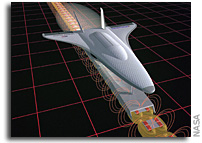csmyth3025":1yhwh417 said:
annodomini2":1yhwh417 said:
There's some a[m]biguity over the Takeoff mass, the main page is saying 275 tonnes, the C2 version manual is saying 345 tonnes.
Sorry but relative to the cost of the vehicle and its development fuel is cheap, spending another $10-20Bil developing a 2nd aircraft to save maybe 20tons of fuel (its probably less and it's from the orbiters perspective) is naive.
The 2nd aircraft would use more fuel, simply due to the extra mass, there would need to be more ground support and maintenance such as the runway to allow this enormously heavy vehicle to take off. Which increases overheads...
The C-2 variant is the most recent design iteration of the original (275 tonne) Skylon concept.
I think that I wasn't clear about value of the fuel and undercarriage weight savings. The Skylon, as proposed, has a limited deliverable payload to altitudes compatible with rendezvous with the ISS or other (future) space facilities at higher orbits. Any fuel and weight savings would presumably be applied towards extending its payload capacity and/or its maximum achievable orbit.
The object is to provide a vehicle that works well in the lower atmosphere (the carrier wing) and a vehicle that works well in the upper atmosphere and in space (Skylon). I think trying to design a vehicle that can do both will result in a compromise vehicle that that will not do either very well.
Chris
I get your point of trying to increase the payload fraction, however you have missed the point of Skylon.
Heavy lift is currently needed because launch costs are high, the costs of launching lots of smaller payloads outweighs the smaller launch costs and the adaptions to the payload to be launched in this way.
Skylon is intended to be fully reusable, therefore once developed and built the costs come from fuel and maintenance.
When factoring the design and build costs, this is where the majority of the costs come in current launch technologies.
The main issue as the originator of this thread was attempting to overcome, is that the problem is not the cost of the vehicle, but frequency of launch and the mechanisms by which the rockets are produced.
Skylon eliminates the second part of that and in theory, should allow a higher frequency of launch at a lower cost.
As an example;
Conventional Rocket:
If it costs you $20 Billion to develop a rocket.
It costs you $150 Million to build each rocket
The fuel for each lauch is say $100,000 (This is a guess!)
You launch the rocket 150 times say over a 10 year period, before something else comes along to replace it.
The cost of launch of each vehicle is $283,433,333.3
Skylon
If it costs you $20 Billion to develop Skylon
If it costs you $300 Million to build a Skylon
The fuel for each lauch is say $150,000 (This is a guess!, but fuel is higher due to lower payload fraction)
Maintenance costs are say $250,000 per launch.
Because you only need to build the Skylon once and apply the maintenance costs per launch.
The cost of the launch of skylon over the same frequency and period is:
$135,733,333.3
Or less than half of the conventional rocket.
Now if we say skylon turnaround takes 2 weeks and launch at every window (26times a year)
= 260 times over 10 years.
The cost reduces to:
$78,476,923
If you build 5 Ships instead of one, launching at the same frequency.
With the build cost dropping to $250,000,000 (Larger volume, generally = lower build costs)
This drops to:
$16,746,154
Or less than Soyuz.
With the passenger compartment with 24 passengers,
This translates to approximately $700,000 launch costs, so with a good profit margin $1mil for an orbital jaunt.
More ships and higher frequency would result in even lower costs.
Obviously I am guessing at the fuel and maintenance costs, so these numbers aren't realistic, but as an example.
Basically Spending another $20Bil developing another carrier aircraft is going to double launch costs, for the sake of a small amount of payload fraction.
This is where the US screwed up with the Shuttle, trying to add heavy lift capability which wasn't needed.
Personally I would spend the $20Bil building another bigger ship, if you needed a heavier launch capability.
ETA:
To Expound a little, if a commercial operator bought a skylon for say:
$500mil
Over a 10year life
this would be
2.4Mil per launch (assuming they could complete all available launch slots)
With 24 Passengers
This is $100k per passenger
So $200k orbital launch (equivalent to the proposed Sub-orbital ticket costs)



